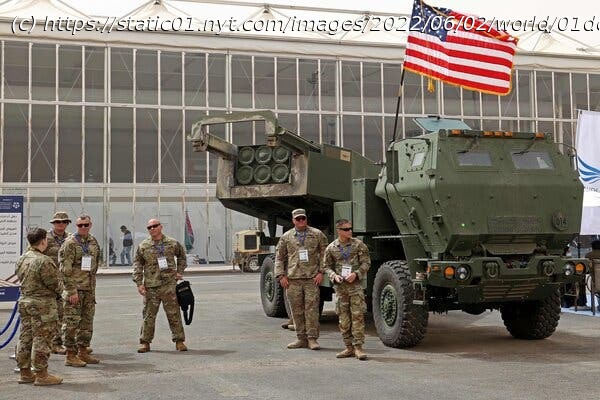President Biden faces a balancing act as he decides how far he is willing to go to help Ukraine while avoiding a dangerous escalation with Russia.
When the White House began negotiating with Ukraine to provide it for the first time with some of America’s most powerful, precision-guided weapons, President Biden insisted that President Volodymyr Zelensky agree to one major restriction: No firing into Russian territory, no matter how great the provocation.
“Ukrainians have given us assurance that they will not use these systems against targets on Russian territory,’’ Secretary of State Antony J. Blinken told reporters on Wednesday, with the director general of NATO standing alongside him. But he immediately added that Russia was the only one to blame for the introduction of a powerful new weapon to the battlefield. “The best way to avoid escalation is Russia to stop the aggression and the war that it started.”
There is no question that the decision to give Mr. Zelensky the weapons he has requested for weeks, intended to target Russian command posts and staging areas inside Ukraine, marked a major escalation in the kind of military aid that Washington is providing to help kill Russian forces. But the restriction illustrated the balancing act that Mr. Biden is constantly facing as he decides how far he is willing to go to help Ukraine without escalating the conflict into what he has warned could result in World War III. It will be weeks, or months, before anyone knows if Mr. Biden has gotten that balance right. Russia’s immediate response amounted to a muted condemnation. But if the weapons, called High Mobility Artillery Rocket Systems, prove effective at taking out more Russian generals sitting in their posts, or is viewed by Russia as a threat to territory it is clearly considering annexing as part of Russia itself, all that may change. And the real test may come when Russia launches more missile attacks on Ukraine from Russian territory — and Mr. Zelensky will be bound, by his agreement with his chief arms supplier, to refrain from responding in kind. Mr. Biden signaled his decision to send more powerful weapons in an opinion article published online in The New York Times on Tuesday evening. But even that article contained messages meant to keep President Vladimir V. Putin from overreacting. Mr. Biden, who two months ago said “for God’s sake, this man cannot remain in power,” made it clear that if Mr. Putin is to be deposed, it will have to be by the Russian people. He wrote that “the United States will not try to bring about his ouster in Moscow.” And just weeks after his defense secretary said that the U.S. sought to weaken Russia so that it could never conduct an attack like this one again, Mr. Biden wrote that “we do not want to prolong the war just to inflict pain on Russia.”
But clearly the concept behind sending the HIMARS system, as the Pentagon calls it, is to inflict enough pain that the war in Donbas, and the surrounding areas in Ukraine’s east and south, is as costly for Russia as possible — in lives, in lost equipment, and in the reputational loss that Russia has suffered now that it is clear Mr.
Start
United States
USA — Political The U.S. Is Sending Advanced Weapons to Ukraine. But Conditions Apply.






